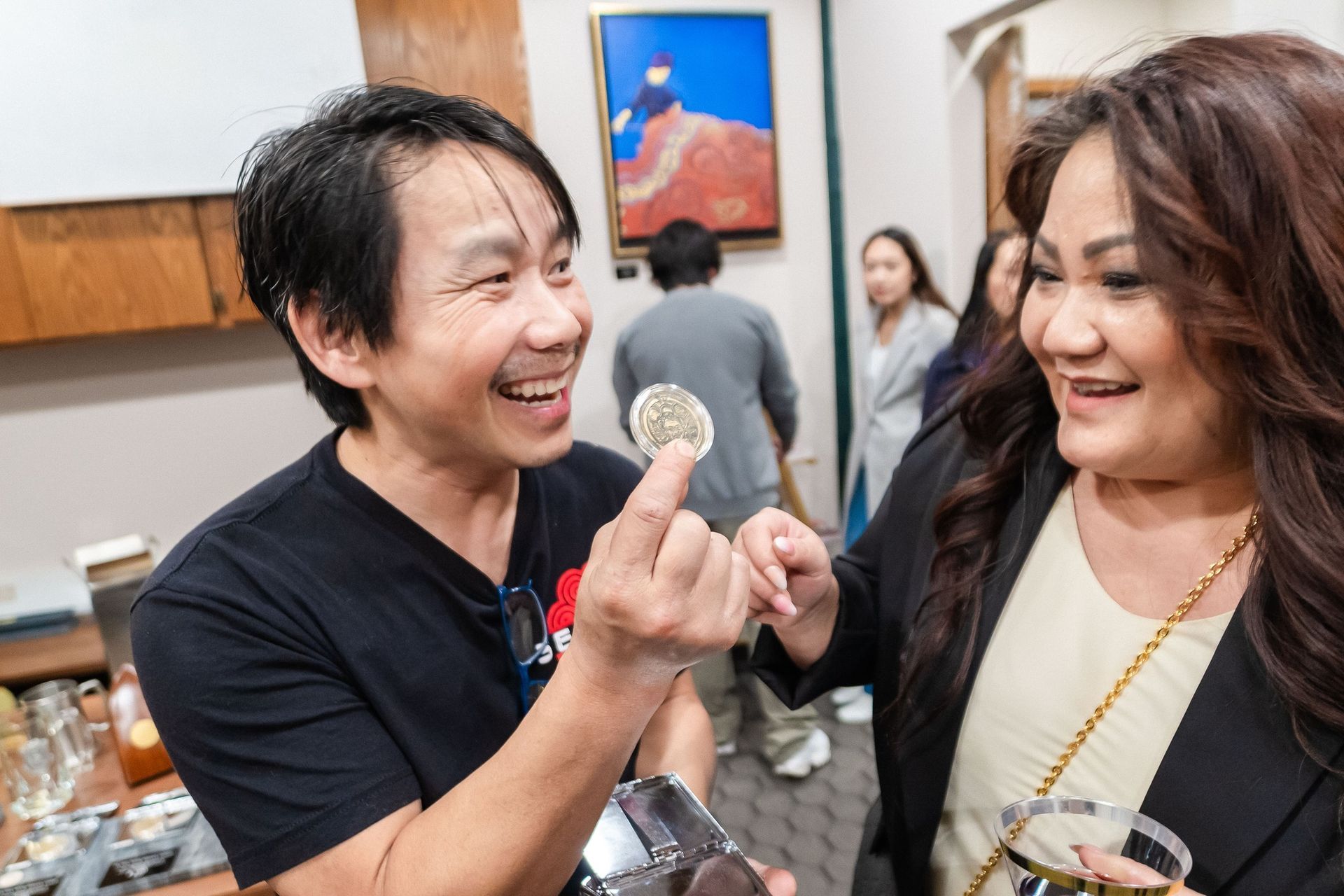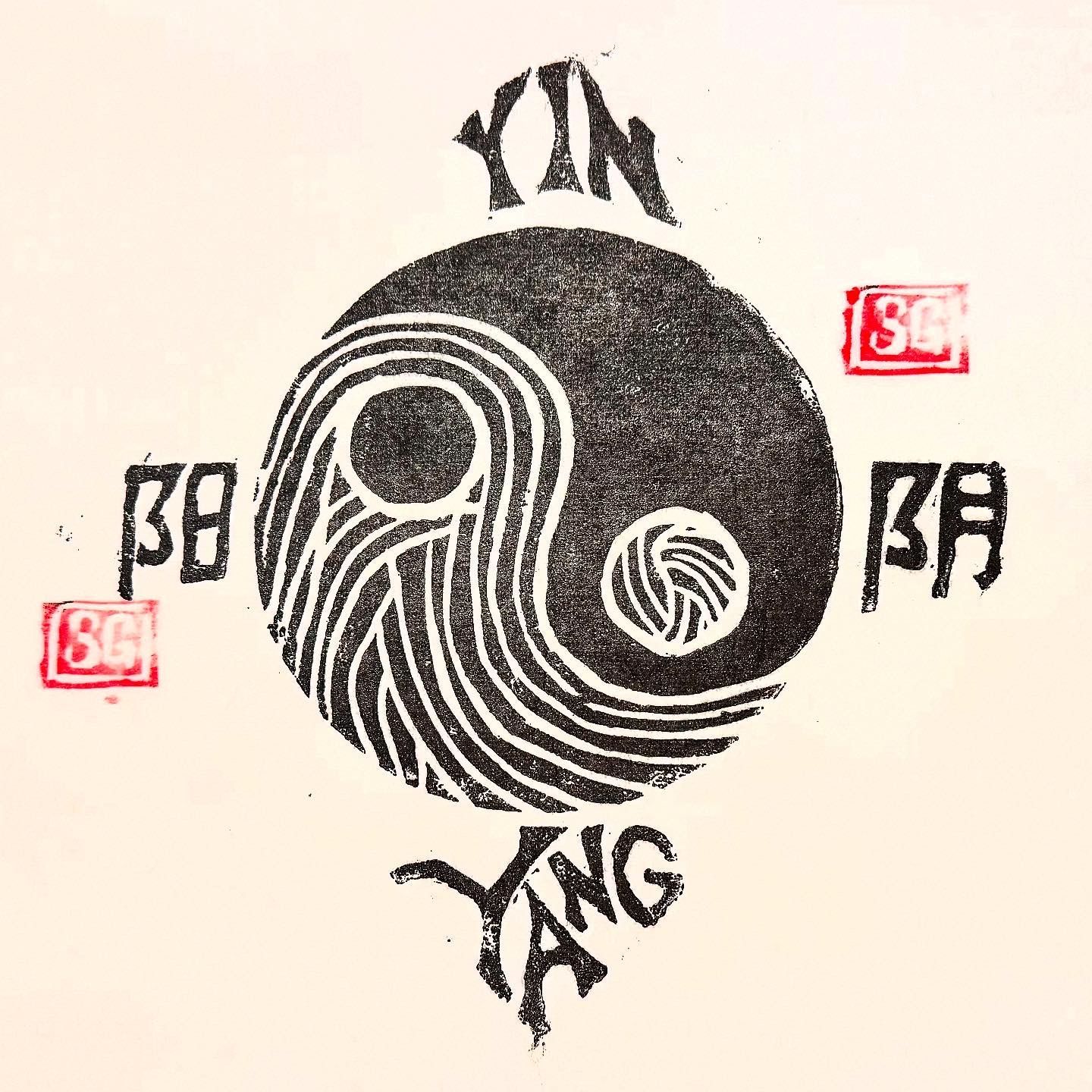Grand Opening of Seexeng's Fine Custom Creations
I had the honor of attending a very special event for an important mentor in my life. Seexeng Lee, a Hmong-American mixed media artist hosted the opening of his newest creative venture, “Seexeng’s Fine Custom Creations”. I felt called to feature Seexeng’s opening in my Apsara Creative blog, as his work has been highly influential in my own practice of art. I hope you enjoy an interview with the artist, my dialogue on the art, and personal reflections on Asian-American art.
Part 1 will be about how Seexeng, and I will ask him a few interview questions, while
Part 2 will follow my personal reflections on Asian and American art I have noticed in my own upbringing as both an Asian-American and artist.
Thank you again to all those who have subscribed to my website and email updates. Please feel free to send me some feedback!
Part 1: Featuring Seexeng Lee, Hmong-American Artist in St. Paul
Meeting Seexeng
Seexeng was my first Asian-American teacher, a significant milestone in my journey. While my mother, also an Asian-American and a teacher, shaped my upbringing, having a mentor outside my family who shared my passion for art was an entirely different experience. It was a gift from the universe. This highlights a major gap in our education system— the lack of diverse teachers. Educators from varied backgrounds offer invaluable mentorship, bringing perspectives rooted in traditions that enrich and expand the narratives most familiar in the U.S. When I speak of diverse backgrounds, I am referring to the cultural knowledge and lived experiences that teachers bring into the classroom.
Seexeng was born in Laos, the sister country to my mother’s homeland of Cambodia. Like her, he was a refugee of the Vietnam War. For over 20 years, he has been an educator at Minneapolis Public Schools and The Blake School. When he first arrived at Blake, I was an eighth grader with a budding passion for art but still uncertain of my identity within it. His presence and mentorship empowered me to explore my cultural heritage through my creative practice.
I began by drawing a Cambodian child on a water buffalo, which led to a deeper fascination with the image of the Apsara. Even something as simple as speaking about my culture became an integral part of my artistic journey. Through Seexeng’s guidance, I realized that my ideas had value and a place in the world of art. Looking back, I see our meeting as more than just a personal milestone—it was a significant moment within the broader narrative of Asian creators and artists, a convergence of stories that continue to shape and inspire.
This fall was the beginning of his 28th year of teaching. Seexeng left teaching at the Blake school, courageously stepping in to his new venture “Seexengs Fine Custom Creations”. Here are some photos taken by Andrew Xiong.
Interview with Seexeng Lee
SG: What drew you to choose the location?
SL:
I actually wanted a location in the East Side of St. Paul, the highest concentration of Hmong in one neighborhood, but the price and lease duration was way more than I can afford but more importantly the lease duration was 1-2 year commitment…which I can not commit to because I don’t know if I can be supported both within the Hmong community and the community at large.“
What’s your favorite medium to work with recently and why?
SL: “My love has always been drawing. Then that led me to painting and 3D sculpture. Since then I tried anything and everything, need to acquire new skills, new experience and constantly in search of which style or what materials will serve my idea best…thus far have not found it but have always default back to drawing, painting and sculpting-in all sort of materials.”
Why now?
SL:
“The most important reason is that I have put my passion and desire to create aside for the sake of earning a living and pleasing my father-who said to me when I told him that I want to go into art and become an artist in college…he was upset and said I didn’t bend over and backward to bring you to this country to be an artist-what is an artist? They don’t make any money, go be a doctor, lawyer or politician, they make good money!!!”
SL:
“I couldn’t simply give in so I decided to be a teacher, knowing that he and the Hmong people loves and honors teachers…never told him that I am going to be an art teacher. I didn’t invite him to visit my classroom until 3 years into teaching.”
SL: “So I have put off my desire to fully create for almost 30+ years…plus last Summer marked my 40th year arrival to Minneapolis from the refugee camp in Thailand…I thought it was time to go back to visit Laos, my birth place which my oldest brother has been since COVID. I wanted to visit my birth village as well as my parents former villages and the route we took to escape Laos. He was excited to receive me and to show me everything! We bought our ticket in late January and planned to travel after school year ended. June 11th, 2024. He called me Tuesday May 22nd we spoke and we quite excited with the plan he had in store for me…only to learn from our relatives that he passed away that Friday in the village in which he resided. We still end up going on the trip but it was difficult and totally different. My main objective was to go and thank our Lee clan members who help preserve my brother's body and assist to have it sent back to us in the U.S.
With my desire to create being put on hold for so long and the sudden passing of my brother, it reminded me that tomorrow is never guaranteed thus if I want something bad enough, I have to take action and take it soon…
Seexeng's Fine Custom Creations can be found in the beautiful historical building (now offices/workspaces) across the Union depot station. 255 Kellogg Blvd E, St. Paul, MN 55101.
Part 2: Sara's Reflections
My favorite pieces: these two I immediately found myself connected to.
"Sadness" Did you ever envision angels being sad too? Well Seexeng has. I found my spirit gravitating toward this piece for some reason. Historically, art has encapsulates angels as heavenly non-human beings. Especially in Christian art, we observe Angels to be the looking over the humans and embracing them, often with posture that is more stoic and confident. But who embraces the angels? I like this piece as it gives us a new perspective on angels. They have become tired, or even somber, maybe because of humanity? The posturing of Seexeng's angel is significant as it poses a alternative way of thinking about those angels that watch over us. I don't think this inherently takes from from the idea of angel either. Rather, it provides more human-ness to the angel, because angels often come to us in human-form or maybe were once humans themselves. They are sent to send us messages. And in this image, I see an angel of sadness that models a very human posture that sometimes I need to embody to release that sadness, fear and worry.
As I continued to think about this piece I began to sort of imagine the angel as maybe being sad because they have no more humans to go to. Is this the result of a sad angel? Having no human to work with or send messages to? The possibilities of a sad angel are endless. I wonder how this piece makes you feel.
"Alchemy" Seated in a similar posture, Alchemy presents a transformative image for the audience. The body is shattered, falling apart, almost like a hollow ceramic. Smoke bleeds through the openings and ascends through the cracks. I thought to myself, wow what an incredible concept. I thought about how a phoenix similarly rises up through the ashes. Alchemy to me, symbolizes the physical body transcending to a spiritual one. When talking to Seexeng, he noted that we often have to break through our shell to realize our essence. I like this notion of our physical bodies, maybe even our egos, being this solid, breakable thing that is impermanent. Ultimately, we all have this inner essence that some may label it as our spirit or soul, that is destined to susceptible to fractures. But this is okay, because that soul or spirit, well, it's not the same matter. It is unbreakable, it is free, it is mean to rise.
I loved the colors of this piece too. The bright blue sky and the sandy, desert-looking ground. The blue brings a sort of peacefulness in to the sky or atmosphere in which the spirit is being received. The ground, however, is the color tan, giving us a move grounded earthy feeling to reflect on. Everything that has ever existed in the book of humanity has taken place on ground. Ground is where all decomposes and transforms. Furthermore, the pieces of that person that fell apart, will eventually decompose, and rebirth, for the next generation of humans to set foot on.
The smoke in the air also holds some sort of ball or energy in it's hand too. I like to think of this as potential energy that this spirit is holding. The possibilities of creation beyond what we thought was true. This piece was amazing and I feel both a sense of body and spirit, life and death, yin and yang it the essence of it all.
Last thing I want to note about about Seexeng's work is the repeating angel numbers. From $333 to $1111 to $3333 to $1555. I have always felt connected to angel numbers being born on 11/11. I think it adds to the entire essence of the art as well.
I want to congratulate Seexeng on an amazing opening. May his new business bring abundance to his practice as an artist and the Hmong community he also represents. Thank you Seexeng Lee and Lee Clan!
Although I had only one year of class with Seexeng, his story remained a lasting influence on my work. It inspired me to delve deeper into my creative practice and explore questions in my art that connected to my culture.
Major differences in Asian Art vs American Art.






